You are using an out of date browser. It may not display this or other websites correctly.
You should upgrade or use an alternative browser.
You should upgrade or use an alternative browser.
Happiness is: Home malting
- Thread starter COLObrewer
- Start date

Help Support Homebrew Talk:
This site may earn a commission from merchant affiliate
links, including eBay, Amazon, and others.
DerrangedPOJO
Well-Known Member
Subscribef very kool project!
COLObrewer
Well-Known Member
So, it's been a couple years since this thread was started, where is everybody at with their equipment? Any pics of your equipment would be nice.
My equipment is still waiting for me, life is getting in my way.
COLObrewer, what do you think about using a lumber kiln to for the drying stage of the barley? I have found some really good ideas for them, some as simple as a well insulated room with plenty of ventilation, a dehumidifier and a space heater.
http://dnr.wi.gov/topic/ForestBusinesses/kiln.html
http://dnr.wi.gov/topic/ForestBusinesses/kiln.html
COLObrewer
Well-Known Member
COLObrewer, what do you think about using a lumber kiln to for the drying stage of the barley? I have found some really good ideas for them, some as simple as a well insulated room with plenty of ventilation, a dehumidifier and a space heater.
http://dnr.wi.gov/topic/ForestBusinesses/kiln.html
Looks promising, as I've said before however, I'd want to devise some way to automatically "turn" the grains. I believe this to be the single most important aspect of any (and all) of the malting phases if one wants a consistent product throughout, should be do-able. Prost!


$53.24
1pc Hose Barb/MFL 1.5" Tri Clamp to Ball Lock Post Liquid Gas Homebrew Kegging Fermentation Parts Brewer Hardware SUS304(Liquid MFL)
yunchengshiyanhuqucuichendianzishangwuyouxiangongsi

$53.24
1pc Hose Barb/MFL 1.5" Tri Clamp to Ball Lock Post Liquid Gas Homebrew Kegging Fermentation Parts Brewer Hardware SUS304(Liquid Hose Barb)
Guangshui Weilu You Trading Co., Ltd

$22.00 ($623.23 / Ounce)
AMZLMPKNTW Ball Lock Sample Faucet 30cm Reinforced Silicone Hose Secondary Fermentation Homebrew Kegging joyful
无为中南商贸有限公司

$10.99 ($31.16 / Ounce)
Hornindal Kveik Yeast for Homebrewing - Mead, Cider, Wine, Beer - 10g Packet - Saccharomyces Cerevisiae - Sold by Shadowhive.com
Shadowhive

$49.95 ($0.08 / Fl Oz)
$52.99 ($0.08 / Fl Oz)
Brewer's Best - 1073 - Home Brew Beer Ingredient Kit (5 gallon), (Blueberry Honey Ale) Golden
Amazon.com

$7.79 ($7.79 / Count)
Craft A Brew - LalBrew Voss™ - Kveik Ale Yeast - For Craft Lagers - Ingredients for Home Brewing - Beer Making Supplies - (1 Pack)
Craft a Brew

$33.99 ($17.00 / Count)
$41.99 ($21.00 / Count)
2 Pack 1 Gallon Large Fermentation Jars with 3 Airlocks and 2 SCREW Lids(100% Airtight Heavy Duty Lid w Silicone) - Wide Mouth Glass Jars w Scale Mark - Pickle Jars for Sauerkraut, Sourdough Starter
Qianfenie Direct

$176.97
1pc Commercial Keg Manifold 2" Tri Clamp,Ball Lock Tapping Head,Pressure Gauge/Adjustable PRV for Kegging,Fermentation Control
hanhanbaihuoxiaoshoudian

$20.94
$29.99
The Brew Your Own Big Book of Clone Recipes: Featuring 300 Homebrew Recipes from Your Favorite Breweries
Amazon.com

$58.16
HUIZHUGS Brewing Equipment Keg Ball Lock Faucet 30cm Reinforced Silicone Hose Secondary Fermentation Homebrew Kegging Brewing Equipment
xiangshuizhenzhanglingfengshop
Hello COLObrewer, you seem to be THE authority on home malting here, and maybe you can help me. I'm trying to do some home malting myself and it seems I'm doing OK so far with the germinating stage. The problem is that mu kiln/drying oats is not finished yet, and even then it will only be able to kiln only a small part of my 150 pounds of barley (it's an old freezer project).
The whole thing is kinda rushed, my untreated barley started having a weevil infestation, so I had to do something with it.
Now I have a 150 pounds of germinating barley, and seemingly only one way to stop the germination. The solar way.
Here it's peaking around 95 degree Fahrenheit atm, and it's sunny the whole day this last few weeks. Seems ideal for this. Since you posted in May, I guess it couldn't be warmer than 95 in Colorado than.
Sprouting seems fine so far and it looks like grains should be fully modified soon. I was thinking about bringing the barley on my flat roof tomorrow and spreading it on the sun, if the acrospires are grown big enough.
The main thing I'd like to know is, will I be able to postpone curing the barley for a month after stopping the germination? Or I should cure it in the kiln straight away?
EDIT: First post! I'm lurking here for so long I forgot I never posted here. I never had chance to brew beer since you couldn't find malted barley in my country if your life depended on it. Hence the need for malting my own malt.
The whole thing is kinda rushed, my untreated barley started having a weevil infestation, so I had to do something with it.
Now I have a 150 pounds of germinating barley, and seemingly only one way to stop the germination. The solar way.
Which brings me to you. Can you share the specifics, what was the ambient temp. and how much time it was needed to stop the growing process?I completed another round of malting (50lbs), this batch took alot less time due to the higher ambient temperatures, 7days total start to finish and all should be modified correctly since I was able to use "solar" drying to initially stop the growing process on all the malt at the same time. I simply stopped watering them when they were fully modified and moved them to the sun while still in the malting "floor"
Here it's peaking around 95 degree Fahrenheit atm, and it's sunny the whole day this last few weeks. Seems ideal for this. Since you posted in May, I guess it couldn't be warmer than 95 in Colorado than.
Sprouting seems fine so far and it looks like grains should be fully modified soon. I was thinking about bringing the barley on my flat roof tomorrow and spreading it on the sun, if the acrospires are grown big enough.
The main thing I'd like to know is, will I be able to postpone curing the barley for a month after stopping the germination? Or I should cure it in the kiln straight away?
EDIT: First post! I'm lurking here for so long I forgot I never posted here. I never had chance to brew beer since you couldn't find malted barley in my country if your life depended on it. Hence the need for malting my own malt.
COLObrewer
Well-Known Member
Vann, I believe it was right around 90F during my sun drying. If you can get it halted and dried sufficiently with the sun I believe you can probably wait to further kiln the malt. Personally I would get a large airtight receptacle such as a plastic barrel with the large mouth lid and store the sundried malt there until you need a batch of malt. You can further kiln them as you need them, this is not ideal but we use what we can.
My only other thoughts are maybe some rigid foil sides or "reflectors" to direct sunlight onto the malts, I would imagine with a little effort you can get the desired temperature steps to create some finished pale malt.
This is going to depend greatly on your humidity where you are at.
Malt on my friend.
My only other thoughts are maybe some rigid foil sides or "reflectors" to direct sunlight onto the malts, I would imagine with a little effort you can get the desired temperature steps to create some finished pale malt.
This is going to depend greatly on your humidity where you are at.
Malt on my friend.
Humidity is 52% ATM, would that do?
That's as low as it gets here.
Letting it dry at 90-100F for longer time, will that make for sufficient sugar conversion?
I don't aim strictly for authentic pale malt, anything malt(ish) is success at this time.
Nice idea about the reflectors, I might use some aluminium foil rolls it it's not too windy. I plan to spread the barley as thin as possible, got some very wide plastic sheets ready. That should speed the drying.
The curing for pale malt requires the last couple of hours at 210F, I won't be able to do that without the freezer kiln. That will have to wait, since I'll have to go for a trip.
Why store dried seeds in closed barrel though? To avoid attracting moisture?
But wouldn't the lack of air movement, itself be a cause for molding?
I was planing to use some plastic knitted bags since in those the seeds can aerate.
http://www.youtube.com/watch?v=_-41wQHHi0o
That's as low as it gets here.
Letting it dry at 90-100F for longer time, will that make for sufficient sugar conversion?
I don't aim strictly for authentic pale malt, anything malt(ish) is success at this time.
Nice idea about the reflectors, I might use some aluminium foil rolls it it's not too windy. I plan to spread the barley as thin as possible, got some very wide plastic sheets ready. That should speed the drying.
The curing for pale malt requires the last couple of hours at 210F, I won't be able to do that without the freezer kiln. That will have to wait, since I'll have to go for a trip.
Why store dried seeds in closed barrel though? To avoid attracting moisture?
But wouldn't the lack of air movement, itself be a cause for molding?
I was planing to use some plastic knitted bags since in those the seeds can aerate.
You could check this guy HomeDistiller's solution. This is what I plan to replicate, already have the barrel and the DC windscreen wiper motor (but I'm stuck on the construction atm):Looks promising, as I've said before however, I'd want to devise some way to automatically "turn" the grains. I believe this to be the single most important aspect of any (and all) of the malting phases if one wants a consistent product throughout, should be do-able. Prost!
http://www.youtube.com/watch?v=_-41wQHHi0o
COLObrewer
Well-Known Member
Humidity is 52% . . . . . . . .
Why store dried seeds in closed barrel though? To avoid attracting moisture?
But wouldn't the lack of air movement, itself be a cause for molding?
I was planing to use some plastic knitted bags since in those the seeds can aerate. . . . . . .
This may be too much humidity for sun drying and storing in airtight containers, (If the malts are sufficiently dry and the containers are air tight you will have no mold) I suggested the container as a means to keep the malts fresh and also keep out bugs, you may HAVE to use a kiln to dry them sufficiently. Is this the humidity year-round? I am in a high desert here and humidity is usually not a problem.
Use whatever means you can and proceed with your plan, you seem to have a logical mind and the means to test your theories. Good luck my friend.

I could postpone/cancel the trip but I'd rather not to. If the dried barley can survive a month.
Meanwhile the germination continues.
This is the third day since I've put the barley in it's germination bed. Before that I soaked the seeds for two intervals of 8 hours with 8 hours breathing rest in between.
Rootlets doesn't seem to grow long, acrospire seems to be around 60% of the length of the seed.
Here are some photos of the germination bed (I just used whatever I had handy), some of the germinating seeds and a bad macro of the current growth of the acrospire.
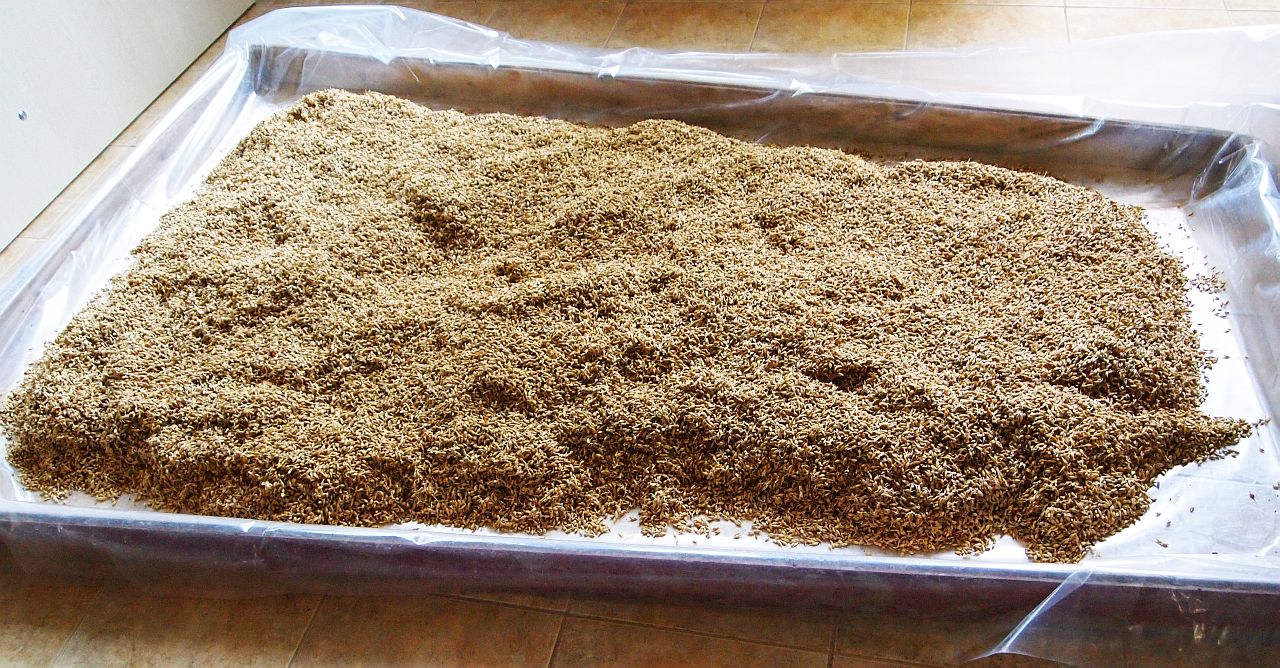
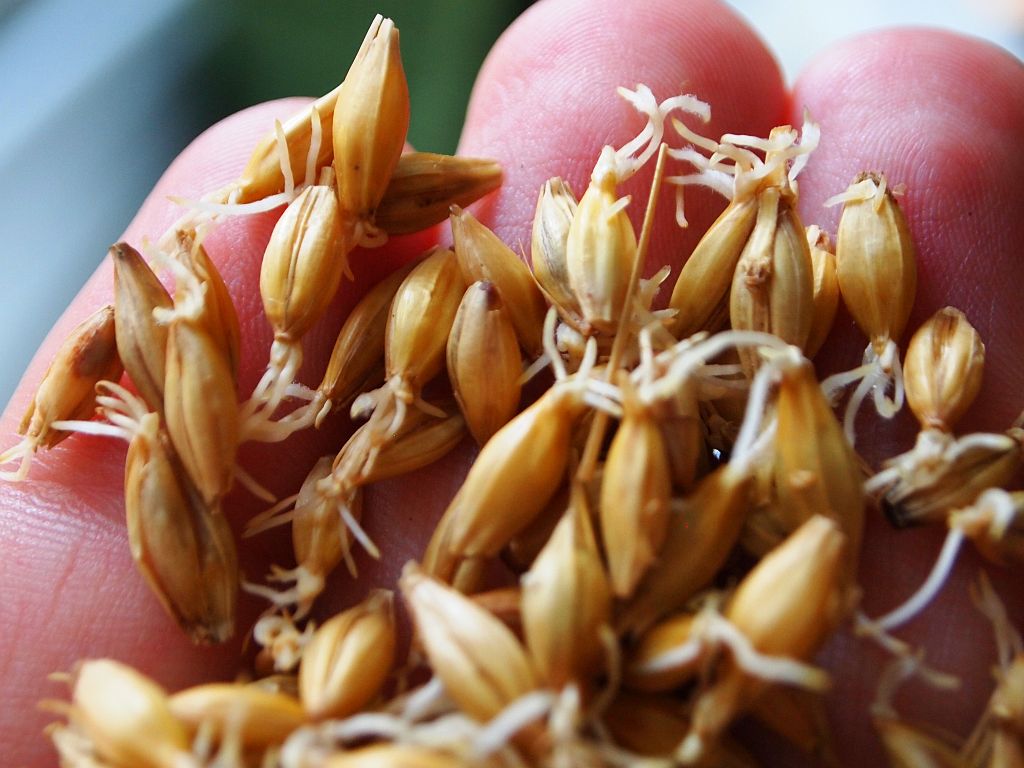
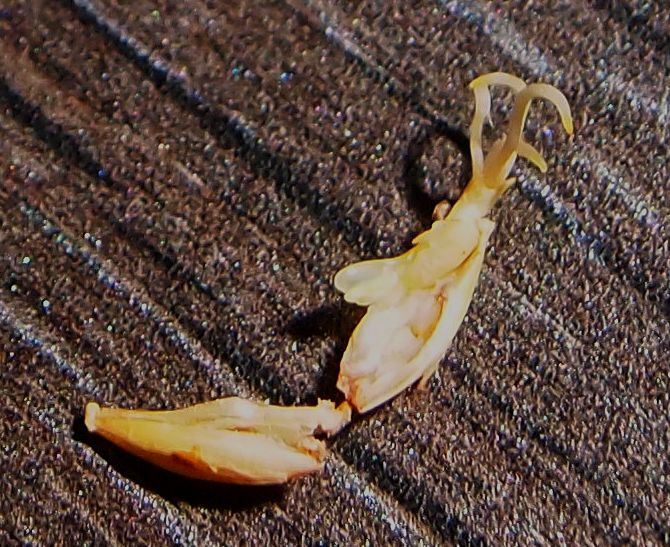
Meanwhile the germination continues.
This is the third day since I've put the barley in it's germination bed. Before that I soaked the seeds for two intervals of 8 hours with 8 hours breathing rest in between.
Rootlets doesn't seem to grow long, acrospire seems to be around 60% of the length of the seed.
Here are some photos of the germination bed (I just used whatever I had handy), some of the germinating seeds and a bad macro of the current growth of the acrospire.



Some of the seeds are over-modified, but overall most of them seem OK. I hauled the whole thing upstairs and spread it all on some plastic sheet to dry on the sun.
It's 11am here, sun shining and no clouds on the horizon.
Temperature is 83F, humidity 34%... I wonder if I should point some fans to blow on the seeds.
Here are some photos.


It's 11am here, sun shining and no clouds on the horizon.
Temperature is 83F, humidity 34%... I wonder if I should point some fans to blow on the seeds.
Here are some photos.


Outside temperature is 95 degree Fahrenheit ATM, 4:30pm. Ambient humidity is down to 15%.
So far, so good . I had to move the drying bed a bit, to follow the sun (the terrace looks north).
Seeds look quite dried up, with rootlets all gone dry and brown. There's some residual wetness on the plastic sheet, even though I was mixing the seeds few times while drying.
I'm gonna risk the weather tonight (the prognosis says it shouldn't rain), and leave the malting barley as it is overnight. It seems one more day on the sun should finish the job (if it's not finished already).

So far, so good . I had to move the drying bed a bit, to follow the sun (the terrace looks north).
Seeds look quite dried up, with rootlets all gone dry and brown. There's some residual wetness on the plastic sheet, even though I was mixing the seeds few times while drying.
I'm gonna risk the weather tonight (the prognosis says it shouldn't rain), and leave the malting barley as it is overnight. It seems one more day on the sun should finish the job (if it's not finished already).

COLObrewer
Well-Known Member
Some of the seeds are over-modified, but overall most of them seem OK. I hauled the whole thing upstairs and spread it all on some plastic sheet to dry on the sun.
It's 11am here, sun shining and no clouds on the horizon.
Temperature is 83F, humidity 34%... I wonder if I should point some fans to blow on the seeds.
. . . . .
Looking good, the acrospire inconsistency I believe will be the single most challenging problem with home malting. Rotation along with consistent moisture and temperature throughout from soaking to the end of "couching" phases should fix the problem.
 Then on to more challenges within the kilning and finishing, etc. (rotation is needed here as well I believe).
Then on to more challenges within the kilning and finishing, etc. (rotation is needed here as well I believe).Rotation both ways than. I misunderstood it back there, when I suggested that rolling barrel DIY malting.Rotation along with consistent moisture and temperature throughout from soaking to the end of "couching" phases should fix the problem.Then on to more challenges within the kilning and finishing, etc. (rotation is needed here as well I believe).
COLObrewer, I will be going for some camping the day after tomorrow. I would like very much to brew myself some small batch of homebrew while there. I think I will try to smuggle some brew gear, when my girlfriend is not looking.
Can you suggest some very simple reciepe? Should I go for SMASH? Or something even simpler?
I guess I will kiln small amount of the malt in my oven tonight.
COLObrewer
Well-Known Member
SMASH is about as simple as you can get.
Second day of sun-drying going fine, day is warm and sunny, the ambient humidity is 39%.
I have a important question for you malters here. Can I freeze the malt?
Will the low temps destroy/denature the enzymes?
COLObrewer, any thoughts on freezing the malt idea?
I have a important question for you malters here. Can I freeze the malt?
Will the low temps destroy/denature the enzymes?
COLObrewer, any thoughts on freezing the malt idea?
I apologize if this has been asked but didn't see it. I am in the germination stage and most of the grain seems to be progressing nicely but out of every handful I look at I have quite a bit that hasn't sprouted at all what kind of germination rate are you guys getting. The barley I bought from the feed store is just a plain brown bag that says barley so no idea what I got. I went three rounds of two hour soak to 8-10 hr air rest as per the beersmith instructions, appreciate any advice.
COLObrewer
Well-Known Member
Mine sprouts pretty evenly, as with all steps in malting it's imperative to keep the moisture content and temperature consistent throughout the grain bed, the easiest way I've found to accomplish this is my moving the grains, mixing them in the soaking receptacle, mixing them in the couching phase, etc. This carries through after the germination process into the drying/kilning phases as well. It's labor intensive but necessary for consistent product.
Any other speculation on my part would have to come after a description of your processes, if completely manual or any automation is used, etc.
Malt on my friend!
Any other speculation on my part would have to come after a description of your processes, if completely manual or any automation is used, etc.
Malt on my friend!
Appreciate answering back. During my soak/air rest phases I didn't really stir it around to much. Had a bucket with holes drilled inside a bottling bucket that I would fill for two hours then leave drained for 8-10 hrs. Wondering if the grains at the bottom maybe suffocated without being stirred enough. Makes sense now that I think about it try it different for round two. I guess the moral of the story is keep em moving throughout the whole process you may have mentioned that once or a hundred times guess I should've listened. Awesome thread thank you been wanting to do this for a while.
Mate, if it helps in any way, I was doing pattern of 8 hours soaking in water followed by 8 hours of rest, and repeated this two times. Never during that time I was doing any stirring.During my soak/air rest phases I didn't really stir it around to much. Had a bucket with holes drilled inside a bottling bucket that I would fill for two hours then leave drained for 8-10 hrs. Wondering if the grains at the bottom maybe suffocated without being stirred enough.
Almost all of the seeds germinated, and they were all at least 12months old seeds.
Even if I don't really have much experience about malting barley, I would theorize that if there was anything to blame in your case... it would be the quality of the seeds themselves.
Maybe finding another source of barley would be the best thing to do in your case. I got mine directly from a farmer, straight after the harvest so no pesticides for storing (and the guy said they do spray them before storage).
Yeah I just bought it from an animal feed store and they had to order it from somewhere else so no idea on the quality, age, etc. I'll try the eight hour series next time see if that helps. Also need to build a bigger dehydrator as fans/oven/sun didn't really dry it quick enough and the first batch went rotten. Need one of those for drying hops anyway. Appreciate the feedback I'll post back with results at some point
Subscribed..incredible post..lot of info for my DIY drum malting automated equipment and barley growth project here in Italy
Just few pics..building details post will follow
David
Sent from my Nexus 7 using Home Brew mobile app
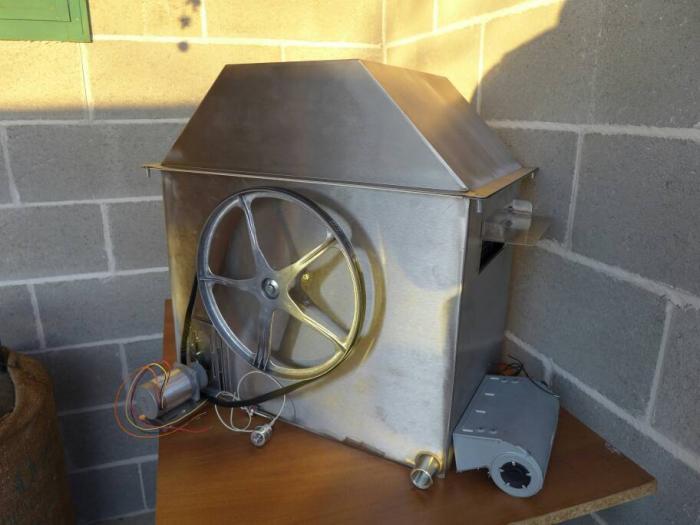

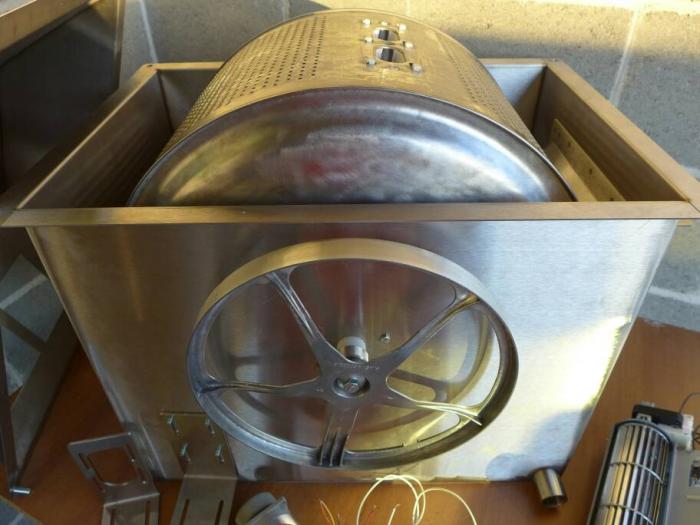
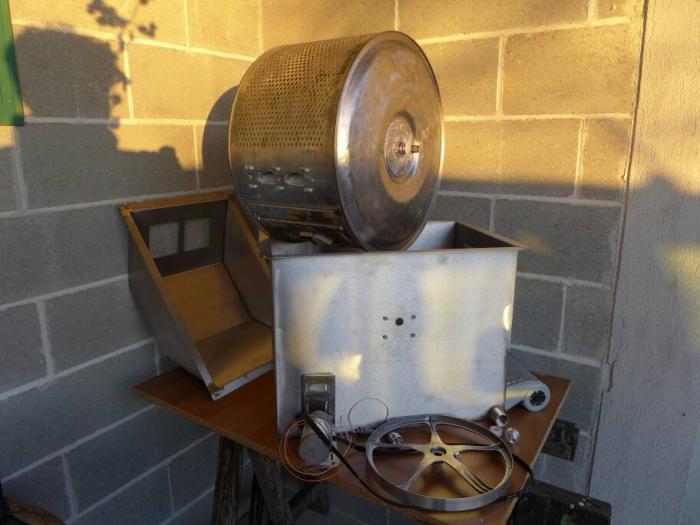
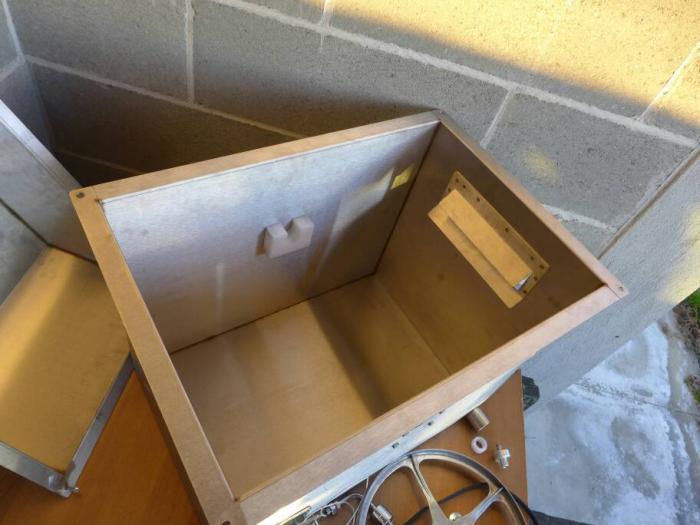
Just few pics..building details post will follow
David
Sent from my Nexus 7 using Home Brew mobile app





COLObrewer
Well-Known Member
Subscribed..incredible post..lot of info for my DIY drum malting automated equipment and barley growth project here in Italy
Just few pics..building details post will follow
David
Sent from my Nexus 7 using Home Brew mobile app
This looks great! How's it coming along?
CtrlMaltDel
Well-Known Member
- Joined
- Sep 20, 2016
- Messages
- 62
- Reaction score
- 27
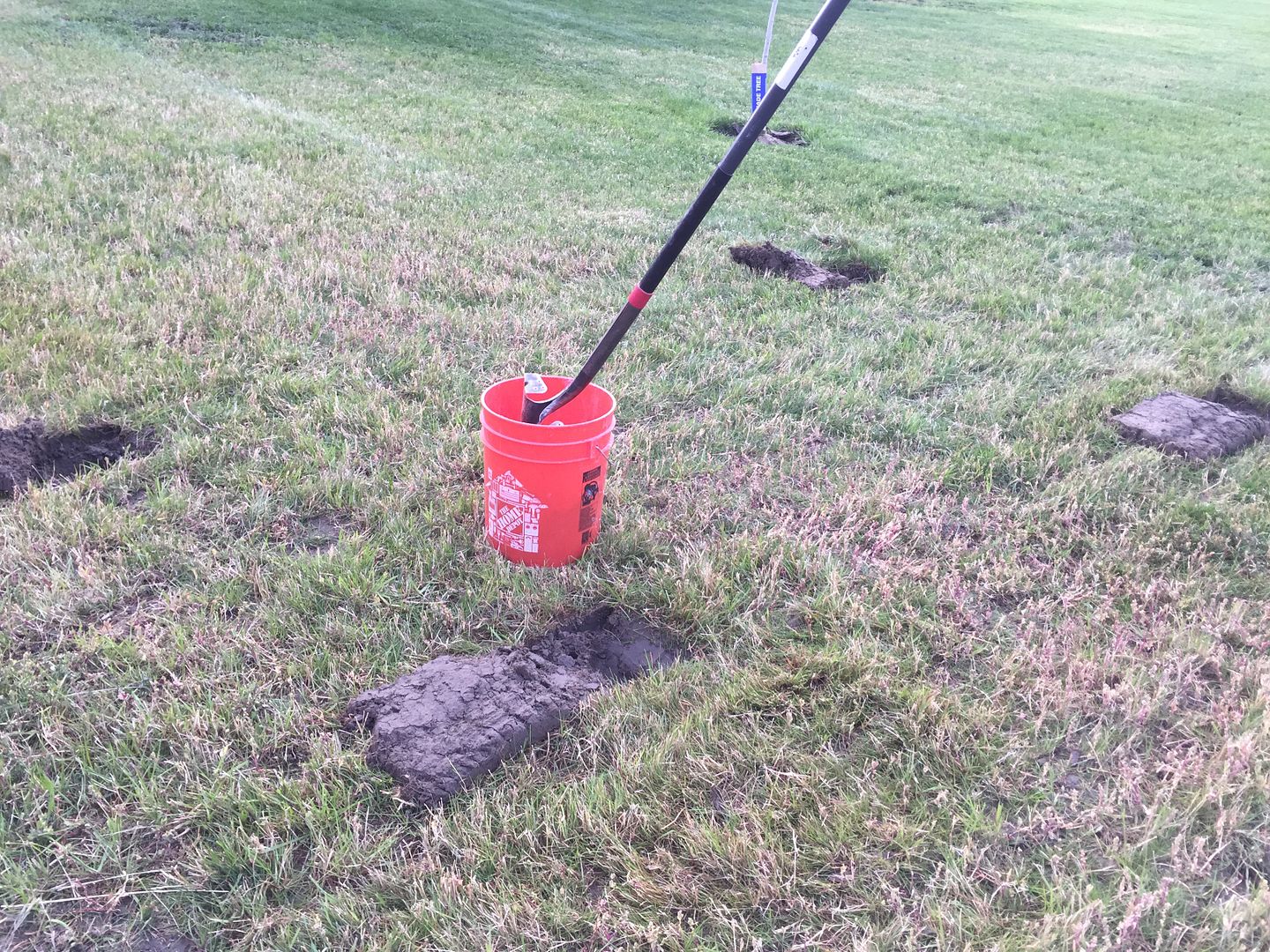
Today I dug four holes in my yard, mixed the dirt from them, and took a soil sample from it. The sample was dropped off at a lab for analysis, and those results will help me amend the soil and prepare it for barley.
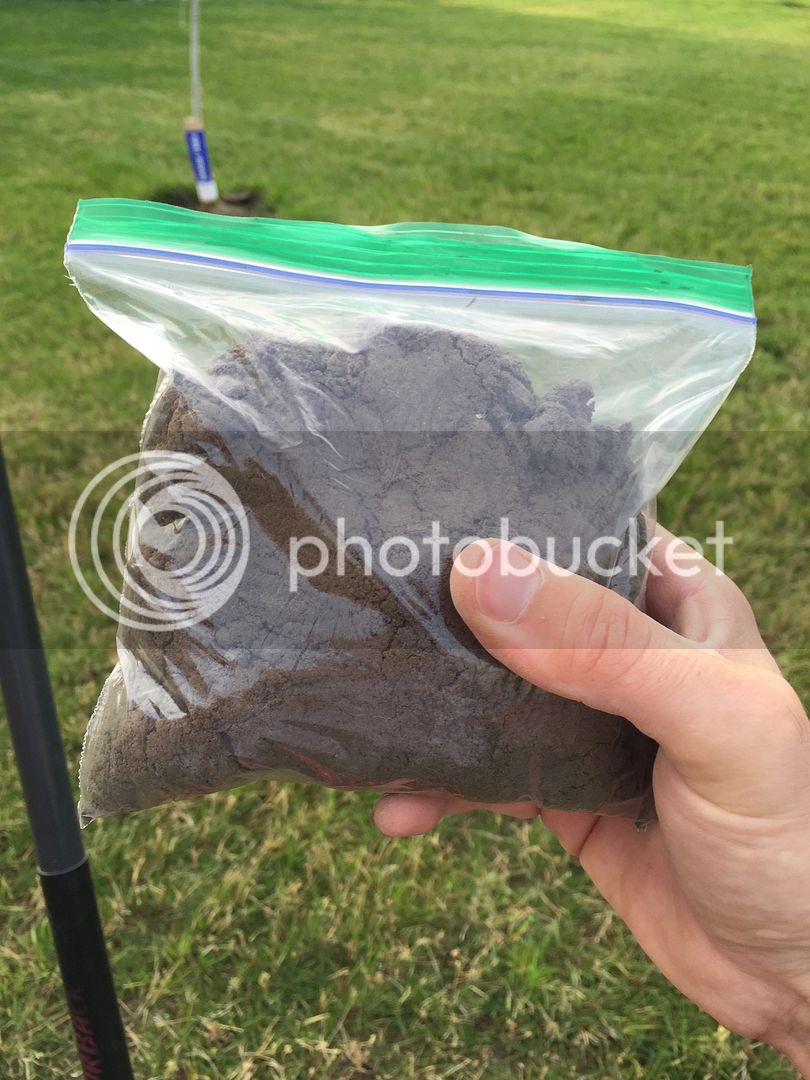
I've been inspired by this thread, and have embarked on my own barley growing/malting adventure. I've ordered a two-row winter malting barley from the University of Idaho, I'll plant 200 square feet of it in the yard, and I'll take a few cracks at malting the left overs. Next year I'll harvest the garden and hopefully have malting working well by then.
By the end of the week I plan to have the barley in the ground, and I'll start my first try at malting some of the left over barley. Wish me luck!
(Sorry if this is necromancy, I didn't find any more recent threads this extensive and informative.)
A friend of mine is from Uganda. We brewed a porter together a few weeks ago and got talking about homebrew in his country. It starts with growing and harvesting millet. Then burying the grains with some water to germinate them. Then toasting them on a barbecue to complete the malting. He said the women managed the malting process, not the men. All sounded very interesting.
As much as I love all grain brewing there is a lot of work that happens to get the grain malted. So kudos to you wanting to do some proper "from scratch" brewing.
As much as I love all grain brewing there is a lot of work that happens to get the grain malted. So kudos to you wanting to do some proper "from scratch" brewing.
CtrlMaltDel
Well-Known Member
- Joined
- Sep 20, 2016
- Messages
- 62
- Reaction score
- 27
"Keep malting" seems to be the motto for this thread, and that struck me as commendably encouraging in the face of all the forums and blog posts which point out how hard home-malting is. That kind of determination and optimism in the face of challenges really stayed with me as I was reading this thread.
I feel like I've gained a lot of information to prepare me to grow, malt, and brew barley. I've been over countless threads, I've read scientific journal articles, I've consulted with professors, and I've found friends who can help me. I bet my first batch still turns out crummy, but I'm determined to get this right eventually.
I have a bar in my house, and a big yard, and live in an excellent area for agriculture (South-east Washington state). I've always wanted to be able to serve guests a fully home-made beverage, and this is how I'm tackling that goal. I'm excited to share my progress and get any help I can!
I feel like I've gained a lot of information to prepare me to grow, malt, and brew barley. I've been over countless threads, I've read scientific journal articles, I've consulted with professors, and I've found friends who can help me. I bet my first batch still turns out crummy, but I'm determined to get this right eventually.
I have a bar in my house, and a big yard, and live in an excellent area for agriculture (South-east Washington state). I've always wanted to be able to serve guests a fully home-made beverage, and this is how I'm tackling that goal. I'm excited to share my progress and get any help I can!
CtrlMaltDel
Well-Known Member
- Joined
- Sep 20, 2016
- Messages
- 62
- Reaction score
- 27
More progress today. Here is a picture of my back yard:
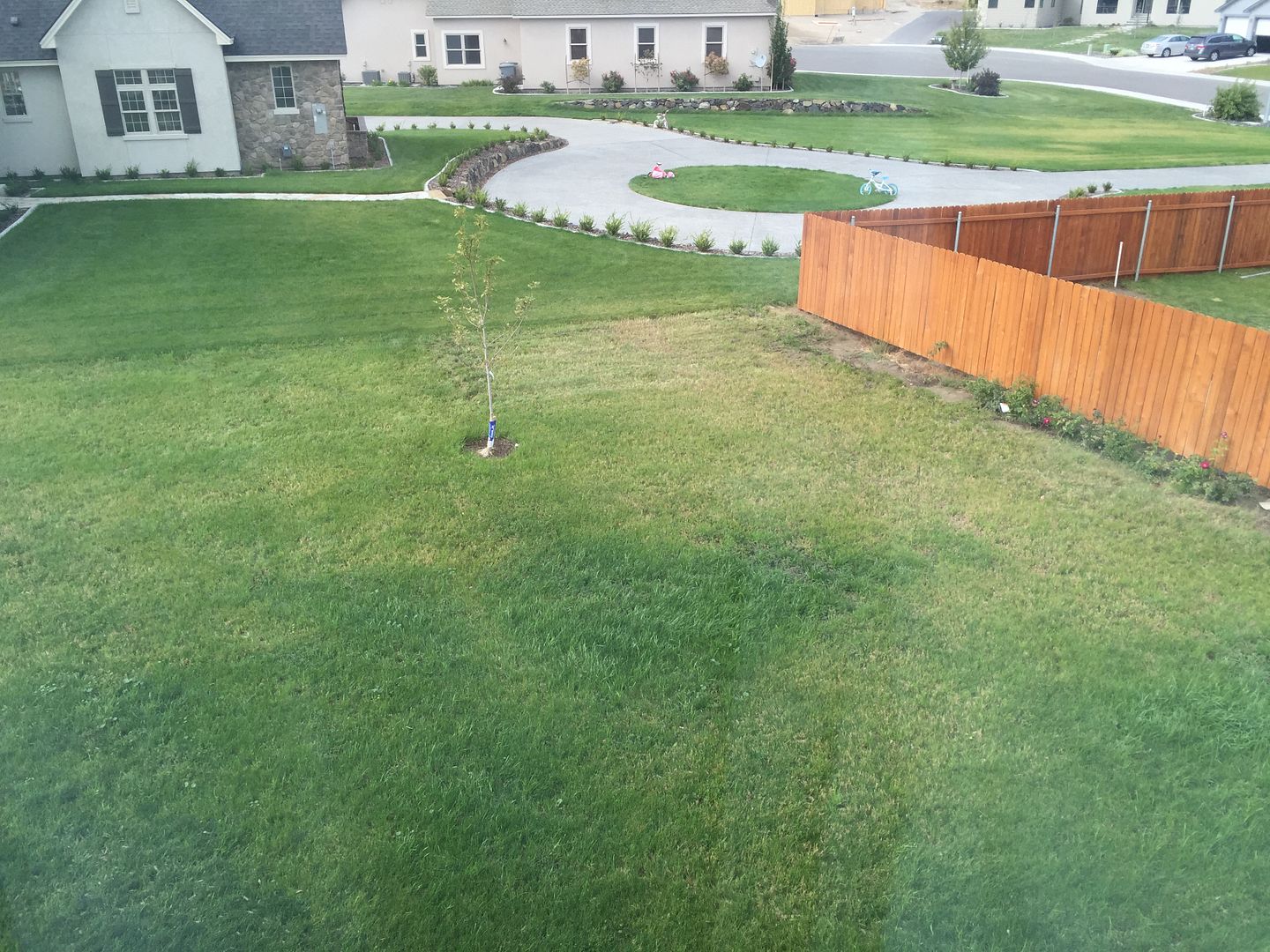
You can almost see the outline of the area that I attacked with the sod cutter. Yesterday I went out with the shovel to finish the job and pull up the cut sod:
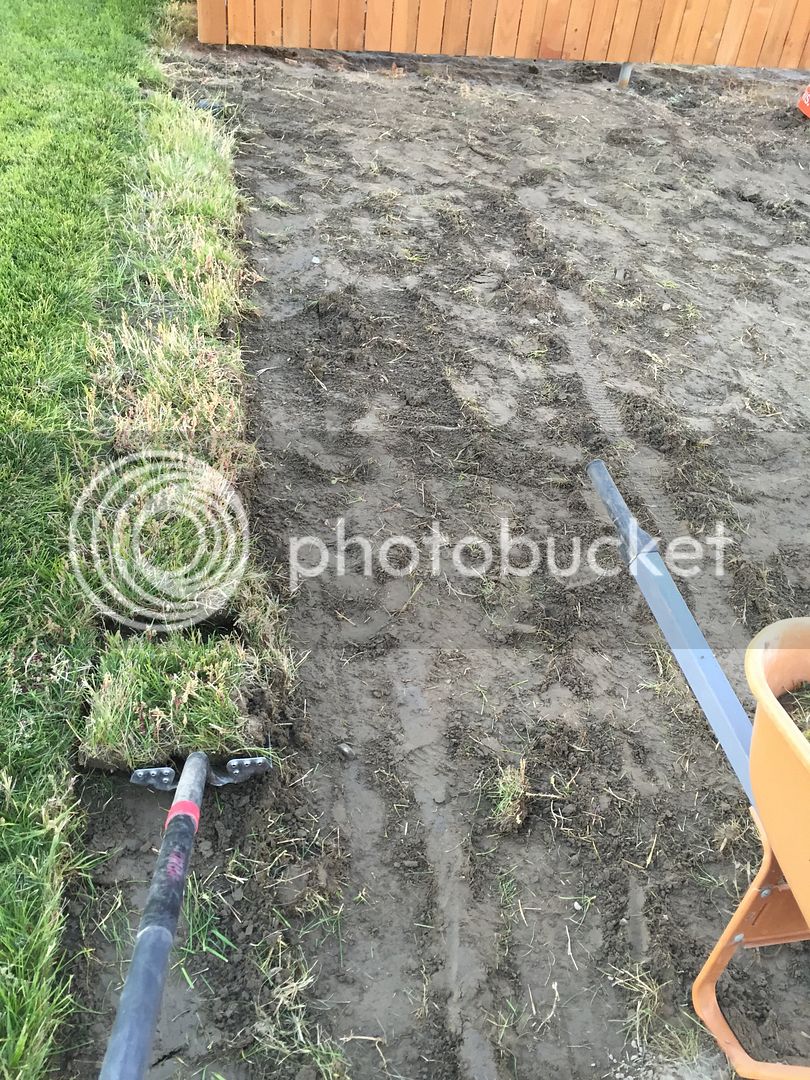
When it was all done it looked like this:
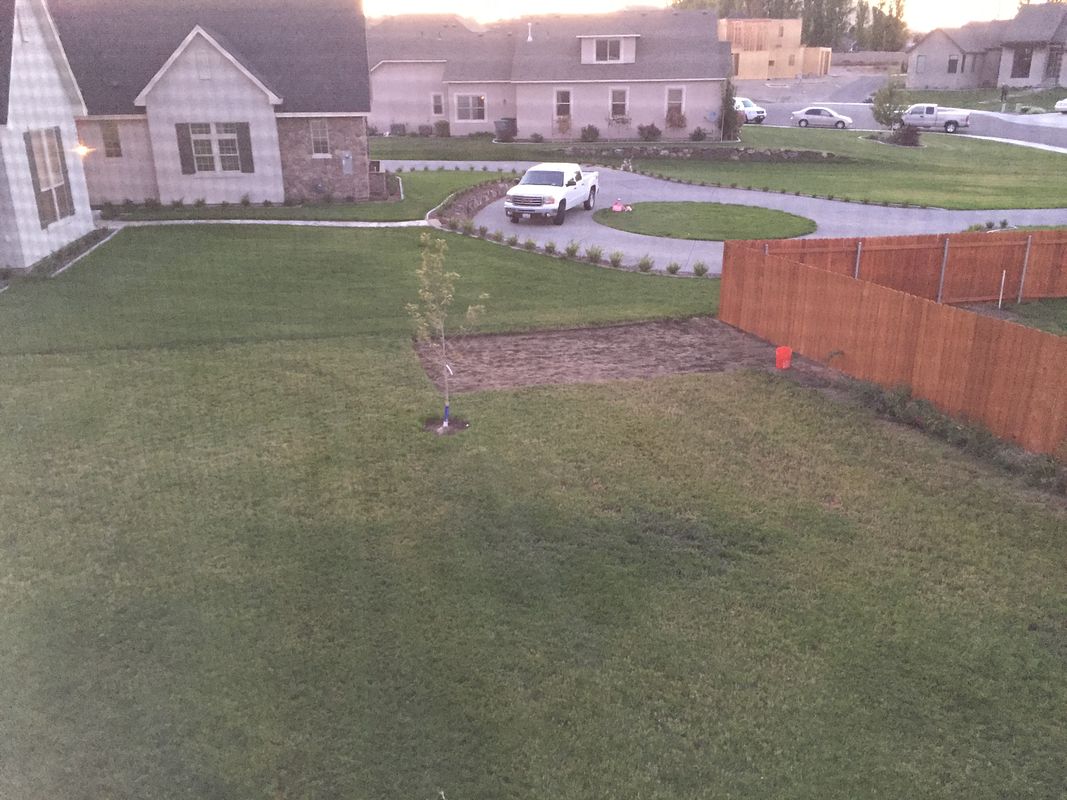
That is 200 square feet of dirt, which will need about 1/3 pound of barley to seed. If my yeild comes out good, I should be able to get 20-35 pounds of barleycorn out next summer.
I'm now waiting for the lab results to get back. Once I have those I can add any ammendments to the soil, till it up to mix it, and bury the seeds. I should have the results in today, and the barely by the end of the week. I'll post when there's news.

You can almost see the outline of the area that I attacked with the sod cutter. Yesterday I went out with the shovel to finish the job and pull up the cut sod:

When it was all done it looked like this:

That is 200 square feet of dirt, which will need about 1/3 pound of barley to seed. If my yeild comes out good, I should be able to get 20-35 pounds of barleycorn out next summer.
I'm now waiting for the lab results to get back. Once I have those I can add any ammendments to the soil, till it up to mix it, and bury the seeds. I should have the results in today, and the barely by the end of the week. I'll post when there's news.
Don_Coyote
Well-Known Member
Do you know if your neighbors treat their lawns with any sort of pesticide/herbicide that could affect your barley? Looks like you might want a small buffer of space or another plant back there...
Similar threads
- Replies
- 9
- Views
- 1K
Latest posts
-
-
-
-
-
1/4" Swivel-nut > 3mm EVABarrier > 6.35mm Monotight connector > Duotight Shank
- Latest: redrocker652002
-
-
























![Craft A Brew - Safale S-04 Dry Yeast - Fermentis - English Ale Dry Yeast - For English and American Ales and Hard Apple Ciders - Ingredients for Home Brewing - Beer Making Supplies - [1 Pack]](https://m.media-amazon.com/images/I/41fVGNh6JfL._SL500_.jpg)





















